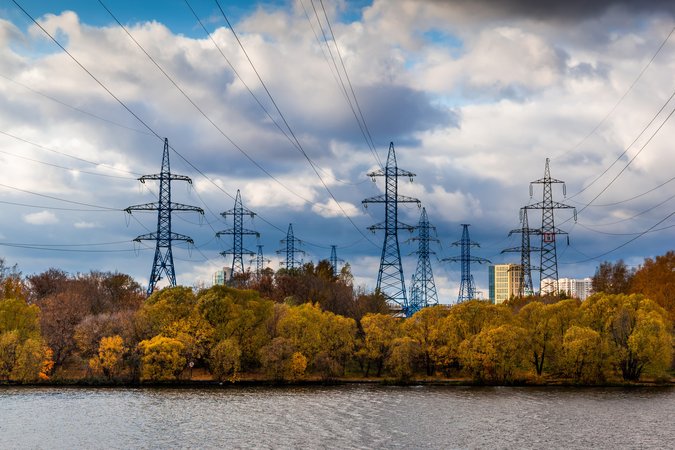Experience with Competitive Procurements and Centralized Resource Planning to Advance Clean Electricity
This literature review surveys recent developments in competitive procurements and centralized planning through Integrated Resource Planning and their role helping states and utilities meet ambitious clean energy goals.
Executive Summary
Efforts to decarbonize the electricity sector are changing, and will continue to change, the mix of resources used to generate electricity. As the mix of electric generating resources evolves, existing market structures and planning efforts must evolve in response to accommodate these untraditional resource types, many of which are intermittent. With the urgent task of needing to turn over the existing capacity fleet, market structures must be designed to both encourage and support new investment in clean resources. Some electricity market experts (Joskow 2019; Corneli 2018) have suggested that some type of periodic, centralized, competitive, long-term procurement (operating parallel to current daily short-term markets) could be the best way to accomplish these tasks. In addition, system-wide planning efforts could be necessary to realize these goals of achieving a decarbonized system without compromising system effectiveness. This paper refers to such a procurement process as a long-term market.
Centralized procurements for the purpose of acquiring new clean energy resources, and planning that accommodates these resources, have ample precedents. Existing institutions and mechanisms can provide useful insights and lessons for future market design. The aim of this paper is to review real-world experiences with similar institutions and mechanisms in various settings to glean relevant lessons for future long-term centralized market designs. These experiences include (1) competitive centralized procurement for encouraging clean energy and (2) utility integrated resource planning (including those plans incorporating all-source utility requests for proposals [RFPs]) as it relates to planning for and optimizing grid operations with a high proportion of clean, intermittent resources on the grid. This paper also describes past experiences and associated reviews to inform the future design of long-term procurements of new clean generation based on experiences with procurements and planning within and outside of the United States.
The review of competitive procurements includes the experiences of both states (including New York and Massachusetts) and countries (including Germany, Brazil, South Africa, and Spain). Many of these jurisdictions have long relied on centralized procurement mechanisms for acquiring new clean resources, and several analyses have documented their successes and challenges. While most of these procurements have focused almost exclusively on enabling investment in new renewables, typically as part of implementing a policy agenda, they provide useful insights on effective design of long-term procurement of clean capacity resources more broadly. A summary of the competitive procurement programs discussed in this paper is provided in table format in Appendixes A and B.
This review of recent developments in planning processes to inform associated all-source procurements focuses on the experience of US state regulators and utilities in developing resource planning that improves integration of intermittent renewables, thereby providing useful lessons for centralized markets that seek to ensure successful integration of such resources. In particular, this review focuses on recent experiences in states such as Hawaii, Colorado, and California, which seek to identify the optimal mix of resources needed to balance grid operations and support intermittent resources. Such experiences illustrate the role that planning could play in facilitating efficient long-term markets. Backgrounders explaining the regulatory context of the integrated resource planning approaches discussed in section 3 are covered in Appendixes C, D, and E.
Notably, this literature review simply provides a summary and analysis of existing design features of certain procurements and integrated resource plans (IRPs) and how those have functioned. Where possible, the review highlights how they have succeeded or failed in achieving their intended goals for adding and integrating clean resources. The review does not provide normative analysis for how procurements should be designed to achieve these goals, but rather it provides a reflection on how others have sought to address these challenges.
Overview of Long-Term Procurement Discussion
The review of procurements of new generation from clean resources is divided into four sections representing the stages of procurement: (1) choosing what to procure, (2) design of the bidding process, (3) evaluation of bids, and (4) contract award and implementation.
In section 2.1, we focus on the products procured through existing procurements, such as energy versus environmental attributes, and discuss the arguments for and against each approach. We also discuss how existing procurements have treated different technology types, and we review how some programs have enabled a combination of resources to be bid together.
In section 2.2, we review how existing procurements have designed the bidding process to encourage competitive outcomes while also minimizing risk by requiring certain qualifications for bidders to participate.
Section 2.3 explores the different methods that procurements have used to evaluate bids in order to select the optimal resource mix and achieve certain goals, such as policy priorities or planning criteria.
Finally, section 2.4 focuses on the contract award stage of procurement, with lessons that touch on how to balance ensuring timely project completion with enabling flexibility that projects may need, encouraging financeability of projects, and reducing counterparty risk.
Design choices at each of these stages can affect the outcomes of the procurement (including cost) and the extent to which these outcomes fulfill the intended purpose of the solicitation, such as meeting policy goals or expanding the use of a particular technology or energy product.
Overview of Integrated Resource Planning (IRP) Discussion
The review of IRPs focuses on recent developments in utility and state practices around integrated resource plans and associated all-source RFPs. These examples explore real-world approaches to identifying which resources (generation and complementary) to procure or develop, with a particular emphasis on integrating intermittent resources. The states on which we focus were selected because they are intentionally choosing to procure a high proportion of renewables relative to other sources, which has increased the importance of optimizing resources to reliably balance supply with demand.
We begin with an introduction to integrated resource planning, generally, in Section 3.1. Section 3.2 then examines early decisions in the IRP process, including options for modeling tools, examples of how planning studies are set up, and the inputs used in modeling future resource mixes. Section 3.3 describes some of the ways in which planning is currently evolving to better accommodate resource portfolios that have high penetration of renewable resources. Approaches for estimating the capacity provided by resources in high renewable penetration scenarios, accounting for the increasing importance of modeling that accurately reflects the flexibility of resources and incorporating bid data into planning, are included.
Sections 3.4 and3.5 look at broader topics, including how IRP can be better integrated with other electricity system planning activities and emerging governance issues that IRP efforts face. There has been increased interest in these topics in areas with ambitious clean energy goals.
Integrated resource planning across the United States is currently evolving to better address the changing grid mix, and the recent changes in regions with planned high levels of renewable energy are useful examples. Lessons from their experiences dealing with system-wide operations can help inform the proposals for long-term markets regarding how to confront these anticipated challenges.
Takeaways
Our review of existing competitive procurements globally provides some key takeaways related to procurement design, bidding, bid evaluation, and project realization:
- The type of product and technology chosen in the procurement design stage influence which party bears most of the performance risk and how diverse the portfolio of resources procured will be.
- Various measures can be taken during the bidding process to promote competitive outcomes, but many of these face a trade-off between encouraging competition and reducing contract fulfillment risk.
- Some procurements have demonstrated how the bid evaluation process can be used to advance certain policy goals or give procurements a system-wide review.
- Once winning bidders are selected, contract provisions can be used to mitigate risk associated with contract fulfillment (such as delays or underbuilding) and to reduce counterparty risk.
- Recent developments in integrated resource planning in the United States, particularly in California, Hawaii, and Colorado, similarly provide useful lessons for advancing clean energy:
- Utilities in these states, all of which have aggressive clean energy goals or growing penetration of intermittent renewables, are beginning to alter IRP processes to better plan for a low-carbon energy mix.
- New enhancements include improving planning inputs, such as keeping technology cost information up-to-date, in some cases by using real market bids. Other enhancements include increasing the geographic and temporal granularity of models to better optimize renewables within planning efforts.
- Within the modeling itself, planners are updating their approaches to capture future system needs and better measure the capacity and resource adequacy and balancing contributions of various resources.
- There is interest in better addressing demand-side resources, such as energy efficiency or demand response, of which Hawaii’s new integrated grid planning process is a key example.
- There is a desire to strengthen the essential coordination between state regulators and utilities, as well as among load serving entities themselves, for successful decarbonization planning in the electricity sector, as seen in California.
- There is also growing interest in strengthening planning by leveraging bidding data, as seen in market-based IRPs generally. All-source bidding tied to integrated resource planning illustrates efforts to determine needs in a technology-neutral manner to uncover a wider range of solutions, as seen in Colorado.
- Several US states are exploring ways to develop more comprehensive planning that better links transmission planning, distribution planning, optimization of centralized and distributed resources, and other processes.
To read more, click the "Download" button above.
Authors

Heidi Bishop Ratz
World Resources Institute




